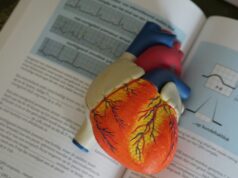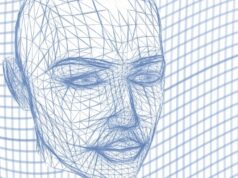 Researchers from the University of California San Francisco (UCSF) in San Francisco, USA recently set out to better understand the relationship between transseptal puncture holes and visual auras as a result of catheter ablation, and found that small injuries in the visual cortex of the brain following the procedure were associated with these aura symptoms.
Researchers from the University of California San Francisco (UCSF) in San Francisco, USA recently set out to better understand the relationship between transseptal puncture holes and visual auras as a result of catheter ablation, and found that small injuries in the visual cortex of the brain following the procedure were associated with these aura symptoms.
The findings of this study have now been published in the journal Heart Rhythm.
According to the researchers, while minimally invasive catheter ablation procedures are often successful in treating heart rhythm disturbances like atrial fibrillation (AF), they are also associated with visual auras of flashes, flickering lights or blind spots similar to the ones seen by people who experience migraine headaches. These visual phenomena are attributed to a temporary hole formed during the procedure—a transseptal puncture—between the right and left atria of the heart. Similarly, migraines have been associated with a small hole in the same location, also known as patent foramen ovale (PFO).
Past research had suggested that these small holes between the atria allow for shunting of an unknown chemical that goes directly from the venous circulation to the left-sided circulation—and, therefore, to the brain—that would usually be metabolised by the lungs. Another possible explanation posits that the hole allows the passage of small blood clots that form in the veins of the legs and then block blood flow to small areas of the brain.
In the current study, patients were randomly assigned to two types of catheter ablation for ventricular arrhythmias. One approach was achieved by a transseptal puncture, while the other was created via a retrograde approach through the aortic valve, not requiring a transseptal puncture. The day after the procedure, the researchers obtained brain magnetic resonance imaging (MRI) scans for all patients in both groups. The researchers relay that both procedures are known to result in small brain lesions that can be seen on MRIs the following day.
While there was no evidence of a relationship between transseptal punctures—or the retrograde approach—and the incidence of these visual auras, the researchers did find a relationship between new brain lesions in the occipital and parietal lobes of the brain and the occurrence of these visual aura symptoms when patients were checked for migraines one month after the procedure.
“Those patients with migraine-related visual auras were significantly more likely to exhibit an acute brain embolism in their occipital or parietal lobes attributed to the procedure,” said study senior author Gregory Marcus (UCSF, San Francisco, USA). “These data suggest that visual auras that commonly occur with migraines may actually signal brain injury or little strokes. This finding could change the whole paradigm of treatment, perhaps focusing more on prevention of blood clots.”
While these brain lesions occurred immediately after the cardiac ablation procedures, they often could not be seen when brains were imaged a month later once patients reported having visual aura, migraine-type symptoms.
“We know that these brain lesions are seen after very common procedures, including after coronary angiograms, after transcutaneous replacement of aortic valves, after ablations for AF and ventricular arrhythmias, and are often referred to as ‘ACEs’—asymptomatic cerebral emboli,” stated Adi Elias (UCSF, San Francisco, USA), first author of the study. “Our data show they are not asymptomatic or clinically silent. It may be the case that we haven’t known what to look for and assessed for symptoms immediately without enough time for the subsequent visual auras that would occur.”
The authors note that, while this finding may be broadly applicable to patients suffering from migraines, the study population itself was focused on those undergoing catheter ablation of ventricular arrhythmias.









